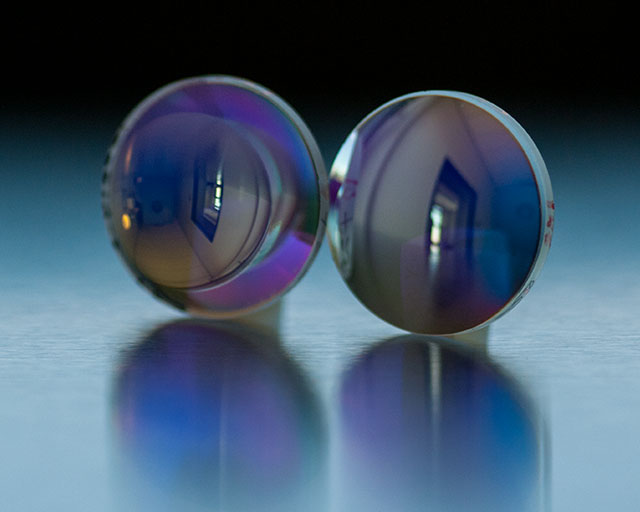Interference coating systems
Model-based coating of 3D components
Optical functions – e. g. anti-reflective coatings or filters for specific spectral ranges – can be realized by means of interference coating systems. These systems deploy a sequence of high and low-refractive layers (e. g. Ta2O5 und SiO2) whose layer thicknesses are precalculated according to the desired optical function. At the Fraunhofer IST, such coating systems are produced by means of magnetron cathode sputtering; applications are optical components in the field of precision optics.

In order to minimize the quantity of optical components – and, thereby, disturbing reflections - interference coating systems should be applied directly to curved lens surfaces. As a result of the differing angles of incidence at different impact points, the wavelength range of the optical functional layers shifts. The compensation of this effect requires a precisely conformed layer-thickness profile.
For the realization of these requirements, the Fraunhofer IST developed the simulation software MOCCA+® for magnetron cathode sputtering, with which plasma discharge, gas dynamics and the dynamic coating of moving 3D components can be simulated. With the aid of this simulation environment, a process for applying interference coating systems to convex lenses was developed. A lens coated with a bandpass filter served as the demonstrator, in which the transmission band always remains within the same wavelength range irrespective of the position of the incident light. In the future, the simulation-based process will be extended to other component geometries, thereby enabling the realization of precision optical coatings in a multitude of applications.